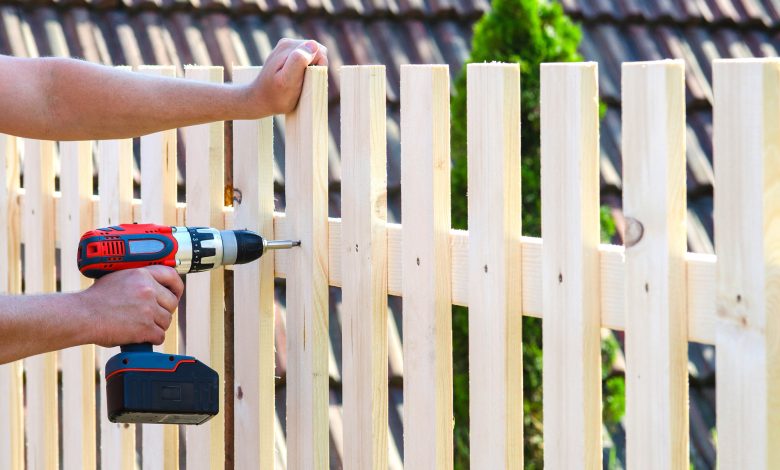Wood vs. Vinyl Fence: Which Is Better?

The classic white picket fence is a timeless symbol of the American Dream.
Today, the dream is still alive, but homeowners have even more design possibilities at their disposal.
In fact, that little picket fence doesn’t have to succumb to water damage and other problems that plague wooden fences. Your dream fence also comes in durable vinyl that mimics the look of real wood.
While vinyl has its advantages, it’s not always the best substitute for real wood. Start comparing wood vs. vinyl fences in this complete guide!
Classic Wooden Fences
Wooden fences have been around for centuries, even as far back as ancient Greece. Early fences were typically made from wood, stone, and sediment.
Fences were invented to demarcate land, separate crops, fence off live stock, and protect property. Decorative fences became more popular in the 1880s as blacksmithing and woodworking grew more refined.
Wood Fences Can Boost Home Value
While vinyl is a popular alternative, wooden fences are still a top choice among buyers. Plus, some homebuyers may prefer the look and feel of authentic rustic wooden fences over vinyl.
When assessing your home’s value, research other property values in the neighborhood and investigate their preferred fencing materials. This trick gauges which attributes potential buyers expect from a neighborhood.
Wood fencing also boosts curb appeal, and realtors agree. Surveys reveal that 99% of real estate professionals believe curb appeal attracts serious buyers.
Plus, homes with good curb appeal are nearly 13% more likely to close than houses without it.
Types of Wood Fencing
The are six primary types of wood fencing, according to This Old House:
- Post and Rail
- Vertical Board
- Louver
- Lattice
- Composite
- Wood Picket
Post and rail fences are typically used to enclose cows, goats, and other livestock. You’ll also find these fences at horse stables and rural recreational fields. While they’re primarily used for commercial purposes, post and rail fencing also pairs well with farmhouses and cottages.
Vertical board fencing is more suited to residential buildings. Unlike post and rail fences, vertical boards overlap to ensure maximum privacy. They also function as windbreakers in windy areas.
If you want privacy with more airflow, you could install a louver fence. These fences are ideal for enclosed backyard porches, hot tubs, and lounge areas. They’re also found in outdoor spas and restaurants.
Lattice fencing is recognized by its signature criss-cross paneling. They’re typically found in backyard gardens, pools, patios, and decks. While they’re more popular in residential design, they work great with cozy restaurants and outdoor eating areas.
Classic picket fences are ideal for front yards. Yet, this traditional fencing doesn’t offer much privacy. Research more ideas for privacy fence designs to maintain privacy without going overboard.
Wood Types and Alternatives
With proper care, wooden fences can last up to 20 years. However, some wood types last longer than others, like cedarwood and redwood. Pressure-treated pine lumber also lasts.
More wood types include:
- Cypress Wood
- Oak
- Pinewood
- Red and white cedar
There’s composite wood fencing, which features a combination of wood, sawdust, and plastic. You can also install vinyl fencing reinforced with wood.
Wood vs. Vinyl Fencing
Most wood fence designs are available in vinyl materials, including privacy fencing, post and rail, panels, garden lattices, and traditional picket fences.
The biggest advantage of vinyl fencing materials over wood is longevity. With good maintenance, vinyl can last ten years longer than wood. They also need less care than wood, requiring only a periodic spray down with with a garden hose.
Advantages of Vinyl Fences
On the other hand, wood fencing requires more upkeep. Unlike wood, vinyl fences don’t require staining or painting. Plus, their surfaces are scratch-resistant.
Since vinyl isn’t organic, it doesn’t attract pests like wood. It’s also nonporous, leaving little room for water to settle.
Other advantages include:
- Resistance to water damage
- Rot-resistant
- Doesn’t need surface refinishing
- Resistant to splintering and cracks
Residential vinyl fencing is designed to mimic wood. Thus, buyers have a wide range of fence colors ready-made. You could also work with a contractor to customize your own vinyl shade.
Disadvantages of Vinyl
Unfortunately, vinyl fencing isn’t without its issues. Though, challenges are easily addressed.
Vinyl fences are weather-resistant not weatherproof.
Weather can cause algae to grow on fences, effectively staining the vinyl surface. Mildew and mold aren’t uncommon, either. Luckily, soap and water should wash these substances away, unless the fencing is stained beyond repair.
Vinyl fencing is also more expensive than wood. Some installations cost double the amount of wood. However, you don’t have to pay for routine staining, sealing, and painting.
Many environmentally-conscious homeowners avoid vinyl fencing because of PVC. In these cases, wood would be a better choice. Many buyers don’t realize that wood is a sustainable material!
Dos and Don’ts of Fence Care
Whether you install a wood or vinyl fences, there are a few basics to follow.
Though vinyl is nonporous, keep sprinklers, garden hoses, and kiddie pools away from both fencing materials. Vulnerable wood fences are quick to rot, while vinyl stains easily from mold.
Don’t install wood fencing without treating it first. Wood fencing needs durable sealant to protect against storms and humidity. Make sure you’re using the right paint when performing touch-ups, too.
DIY fence installation is one of the biggest don’ts of fence care. However, contractors and experienced hobby builders could probably undertake their own installations. You can also install ready-made vinyl fences for quick installation.
Discover the Ideal Fence for Your Yard
Don’t miss out on the benefits of curb appeal and added privacy. Review the advantages and disadvantages of wood vs. vinyl to uncover the perfect fence. You can always explore custom solutions too.
Curb appeal inspiration is everywhere. Remember to follow the blog for more up-to-the-minute ideas!






